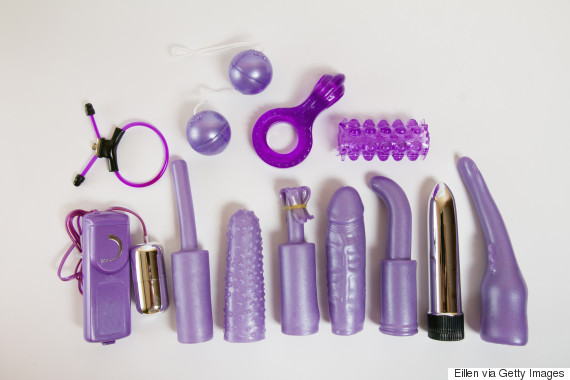Fewer sex toys contain dangerous chemicals than children's toys, a Swedish inspection authority said in a report published on Monday.
In its study conducted in 2016, two per cent of the 44 surveyed sex toys that had been imported to Sweden contained banned chemicals, the Swedish Chemicals Agency said.
In a separate study the year before, the agency tested 112 toys in Sweden and found that 15 per cent contained banned chemical substances, including lead.
![sex toys]()
"This was a bit surprising," Frida Ramstrom, an inspector for the agency, told AFP. "This was the first time we did such a study."
Of the 44 sex products examined, only one plastic dildo was found to contain a banned substance: chlorinated paraffins which is suspected of causing cancer, the agency said.
The agency said it was difficult to determine why more children's toys contained dangerous chemicals.
One contributing factor however was that sex toys were often imported by larger companies, which could exert more pressure on manufacturers to avoid harmful chemicals, whereas children's toys were more often imported by smaller companies which had less power to make such demands, according to Bjorn Malmstrom, a spokesman for the chemical agency.
Swedish law stipulates that chemicals in children's toys "must never pose a risk to human health".
![sex toys]()
Three of the 44 examined sex toys, made of artificial leather and bondage tape, contained a type of phthalates used as a plasticiser at levels above a 0.1 per cent threshold, the agency said.
That specific type of phthalates is not banned in sex toys but is on the EU list of chemicals of "very high concern" as it can affect the body's hormonal balance and cause infertility.
Companies are therefore required to inform consumers if a product contains more than 0.1 per cent.
The global market for sex products is estimated at about $20 billion (18.6 billion euros) a year, according to British marketing research group Technavio.
It is expected to grow by nearly seven per cent per year between 2016 and 2020.
Americans and Chinese are among the biggest consumers of sex toys, according to Technavio.
![toys]()
In its study conducted in 2016, two per cent of the 44 surveyed sex toys that had been imported to Sweden contained banned chemicals, the Swedish Chemicals Agency said.
In a separate study the year before, the agency tested 112 toys in Sweden and found that 15 per cent contained banned chemical substances, including lead.

"This was a bit surprising," Frida Ramstrom, an inspector for the agency, told AFP. "This was the first time we did such a study."
Of the 44 sex products examined, only one plastic dildo was found to contain a banned substance: chlorinated paraffins which is suspected of causing cancer, the agency said.
The agency said it was difficult to determine why more children's toys contained dangerous chemicals.
One contributing factor however was that sex toys were often imported by larger companies, which could exert more pressure on manufacturers to avoid harmful chemicals, whereas children's toys were more often imported by smaller companies which had less power to make such demands, according to Bjorn Malmstrom, a spokesman for the chemical agency.
Swedish law stipulates that chemicals in children's toys "must never pose a risk to human health".

Three of the 44 examined sex toys, made of artificial leather and bondage tape, contained a type of phthalates used as a plasticiser at levels above a 0.1 per cent threshold, the agency said.
That specific type of phthalates is not banned in sex toys but is on the EU list of chemicals of "very high concern" as it can affect the body's hormonal balance and cause infertility.
Companies are therefore required to inform consumers if a product contains more than 0.1 per cent.
The global market for sex products is estimated at about $20 billion (18.6 billion euros) a year, according to British marketing research group Technavio.
It is expected to grow by nearly seven per cent per year between 2016 and 2020.
Americans and Chinese are among the biggest consumers of sex toys, according to Technavio.

-- This feed and its contents are the property of The Huffington Post, and use is subject to our terms. It may be used for personal consumption, but may not be distributed on a website.